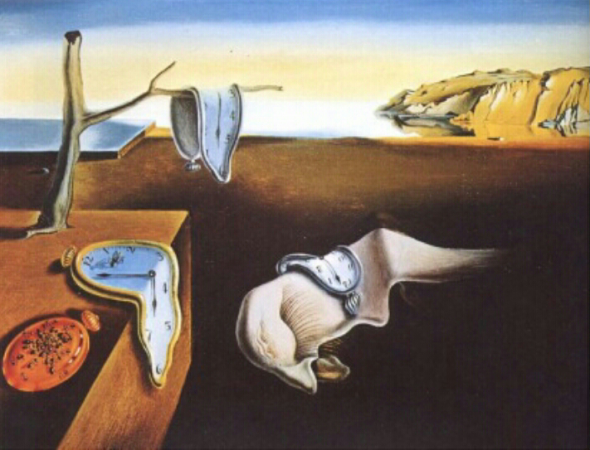Blog

Salvador Dali - "The Persistence of Memory"
Seeing is not the same as looking.
To actually see a picture (or a work of art) means to open the mind and set out on a journey through the intellect; not only by ours but more fascinating still by the artist's and often by the character of the works.
There are absolutely exceptional pictures that need a deeper understanding and a richer appreciation that explains not only the technique but also the intention of the artist. Thus exposing the meaning of obscure themes, decoding the symbolism of objects, colors and even the positions of figures; which at first sight seem mysterious.
And as for any trip, we need a minimum of luggage and preparation.
All in all modesty, I would like to be part of this change in the way of seeing.
Whenever I talk about this subject with someone I see how their thinking goes through memory, and there is an "something" that clarifies and incites the desire to know a little more.
Therefore, and because of my next exhibition that will be July 17 in Madrid ...
I decidedly wanted to write about a Spanish artist.
So many...
The panic broke out!
Which one?
How to choose?
It was then that my nephew Ricardo commented: "I love Dalí" ...
Problem solved!!
"THE PERSISTENCE OF MEMORY"
oil on canvas - 24x33 cm - 1931
SALVADOR DALI
I chose this work because, I venture to say, that it is the best-known and most beloved of Dalí.
In his biography Dalí explains:
... "I was going to go to the movies with Gala (his wife) and some friends, but since I was tired and had a headache, I decided not to go in. We finished dinner with a strong Camembert, and after everyone left I stayed for a long time to the table meditating on the philosophical problems of the "super-melting" that the cheese presented to my mind "...
The center of the picture attracts our gaze to an amorphous figure which in psychology has the meaning of non-emotive, non-active, primary.
This figure is the characteristic "soft" self-portrait of Dalí, who in the reclining and closed-eyed position (with big eyelashes) subtly increases the dreamer's character. It is the primary will to free the subconscious that Dalí believed to be truer than those created by real thought "In the dream, temporality takes on other realities," he said.
But the real impact of the work is due to the contradiction that objects made of metal cannot be soft or eaten by ants.
It is important to note that the work is from 1931, the scientific world was in friction with Einstein's theories and boiling with Freud's theory of psychoanalysis: "The dream is the road to the unconscious."
In the century of relativity theory, this image of the malleability of clocks is a direct association with the malleability of the time of each one of us.
Each clock marks a different time accentuating this idea.
As we look at the melting clocks, they cause strangeness and immediately lead to meditation and questioning.
Like Einstein's theories, time passes differently, and clocks transmit this distorted notion of time.
The only watch that is not deformed is turned upside down and covered with ants which to Dalí (who hated ants) it means putrefaction. It emphasizes the idea of the surrealist movement; the contempt for representative art and thus alluding to his death.
On another clock is lodged a fly to tell us that time flies...
Memory is a way of marking time, a personal and subjective way. Memory’s time is not the same as the clock.
A moment that has long passed can suddenly be remembered as having happened only a few seconds ago. As Einstein put it: "The distinction between past, present, and future is only a stubbornly persistent illusion."
In the background without any artifice, a rock formation represents the view of Dalí's house in Barcelona. This horizon will be present in many of his works, it is the presence of the real, which persists in his conscious memory.
"All my ambition in the pictorial realm is to materialize the images of concrete irrationality with the most accentuated fury of precision."
